Sélectionnez ce type de licence lorsque vous développez une application pour iOS, Android ou Windows Phone et que vous intégrez le fichier de fonte dans le code de votre application mobile.
Camille
par Arabetics
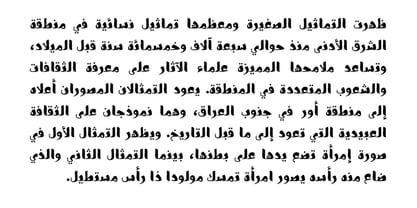
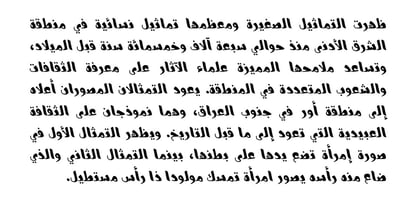
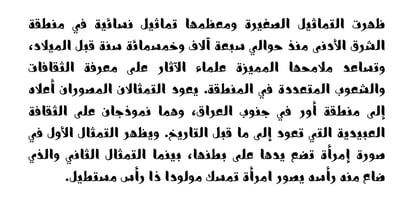
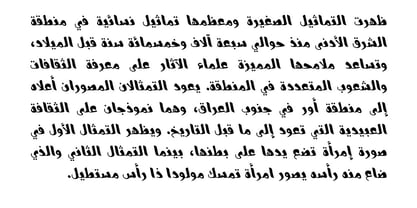
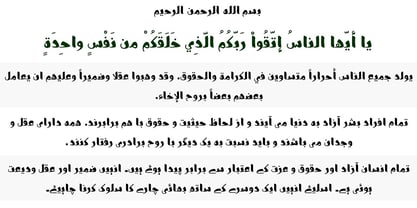
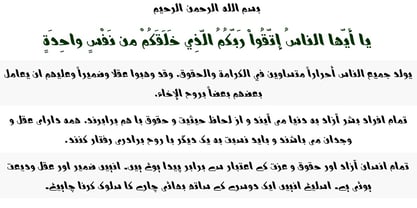
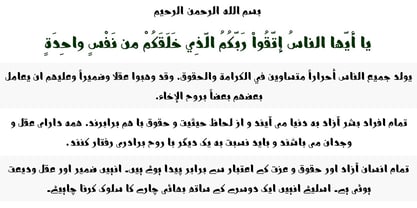
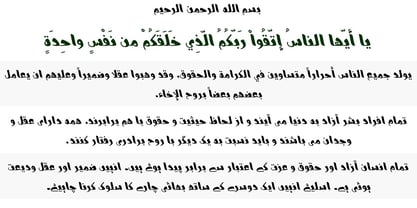
- AaGlyphs
-
Meilleure offreOffres familiales
- Styles individuels
- Spécifications techniques
- Licences
Par style :
$22.25
Paquet de 4 styles :
$89.00
A propos de la famille Camille Police
Camille a été conçu en mettant exagérément l'accent sur la caractéristique verticale des lettres, en éliminant virtuellement l'aspect typique de la ligne horizontale arabe. Le poids des glyphes et l'aspect et le toucher de ce site police sont fortement influencés par le style de la calligraphie coranique koufique ancienne. Camille prend en charge tous les scripts arabes couverts par Unicode 6.1, ainsi que les derniers blocs Unicode Arabic Supplement et Extended-A, y compris la prise en charge des textes coraniques. Cette famille police comprend deux types d'espacement des lettres : isolé pour le texte de petite taille et superposé pour le texte de grande taille ou d'affichage. Les deux types d'espacement ont chacun une graisse avec une version normale et une version italique inclinée à gauche. L'écriture de cette famille police suit le style Arabetics Mutamathil Taqlidi en utilisant différentes hauteurs de x. Le style Mutamathil Taqlidi utilise un glyphe pour chaque caractère ou lettre arabe Unicode de base, tel que défini par les normes Unicode, et un glyphe de forme finale supplémentaire pour chaque lettre librement connectée du texte cursif arabe. Camille inclut les ligatures Lam-Alif requises en plus de toutes les ligatures diacritiques des voyelles. Les marques diacritiques des voyelles (harakat) sont positionnées de manière sélective, la plupart d'entre elles apparaissant à des niveaux élevés et bas similaires - coin supérieur gauche -, afin de les distinguer clairement des lettres. Le tatweel est un glyphe de largeur nulle.
Concepteurs : Saad D. Abulhab
Éditeur : Arabetics
Fonderie : Arabetics
Maître d'ouvrage : Arabetics
MyFonts débout : 26 novembre 2013
À propos Arabetics
Opérant sous le nom de arabetics.com, Arabetics est une fonderie privée basée à New York et une société de conseil spécialisée dans la conception de polices et de lettres arabes, ainsi que dans les solutions logicielles liées à la typographie arabe. Elle est surtout connue pour sa production de caractères simplifiés non traditionnels innovants et inspirants polices. La mission première d'Arabetics est de produire du matériel de qualité polices pour répondre aux besoins informatiques et typographiques des scripts arabes. Elle a été fondée en 2003 par le créateur de caractères Saad D. Abulhab, qui avait déjà présenté le style de caractères Mutamathil, récompensé par un brevet d'utilité américain, le modèle de conception sous-jacent à la plupart des caractères Arabetics polices. La philosophie de conception Mutamathil vise à produire des caractères arabes étendus polices qui diversifieraient et enrichiraient les options typographiques des utilisateurs et relèveraient les défis de l'alphabétisation, de l'éducation, de l'économie, de la technologie, de la concurrence mondiale, ainsi que du style et de la lisibilité. M. Abulhab est ingénieur électricien et bibliothécaire. Son implication dans la conception de caractères arabes et l'informatique remonte à 1992.
En savoir plus
Lire moins